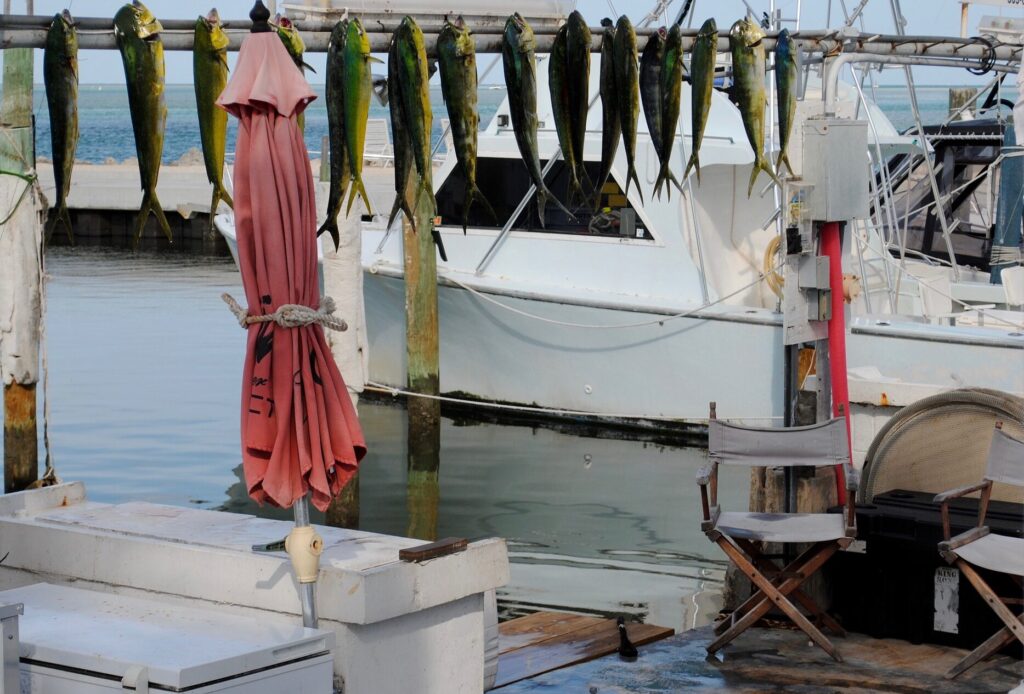These colorful and acrobatic fish are known for their strong fights and delicious taste. To increase your chances of success consider these tips.
Line and Tackle:
Line Strength: Use a line with a breaking strength of around 20 to 30 pounds. Mahi mahi are known for their powerful runs and aerial displays, so a medium-weight line will help you handle their energy.
Rods and Reels: A medium to medium-heavy spinning or conventional rod, paired with a reel that has a smooth drag system. A reel with a high line capacity is important as mahi mahi can make long runs.
Leaders: Attach a fluorocarbon leader with a test strength of 40 to 50 pounds to prevent abrasion from their sharp teeth and reduce visibility.
Strategies:
Floating Debris: Mahi mahi often gather around floating debris like seaweed, logs, or trash. These objects provide shelter and attract baitfish, which in turn attract mahi mahi.
Bird Activity: Look for flocks of seabirds diving into the water. Birds are a good indicator of feeding activity, as they are drawn to schools of baitfish that mahi mahi feed on.
Chumming Consider using small chunks of bait to create a chum slick. This can attract mahi mahi to your fishing area.
Timing and Water Temperature:
Season: Mahi mahi are generally more abundant during the warmer months, from late spring to early fall, when water temperatures are between 70°F and 85°F (21°C – 29°C).
Time of Day: Early morning and late afternoon are often productive times to target mahi mahi. However, they can be caught throughout the day.
Bait and Lures:
Bait: Mahi mahi are opportunistic predators and are attracted to a variety of baits, including live baits like small fish (e.g., pilchards, ballyhoo) and squid.
Lures: Trolling with brightly colored lures that resemble flying fish, squid, or other baitfish can be effective. Look for lures with vibrant colors like blue, green, and yellow.
Best Practices:
Keep Moving: Mahi mahi are often found in schools, so if you catch one, it’s likely that others are nearby. Continue trolling or casting in the area to increase your chances of multiple hook-ups.
Stay Alert: Once you’ve attracted a mahi mahi, be prepared for their energetic bursts and acrobatic leaps. Keep the rod tip up and the line tight to prevent them from throwing the hook.
Handle with Care: Mahi mahi are delicate fish, so handle them gently to avoid damaging their skin.
It’s always a good idea to check the most up-to-date rules and guidelines from the Florida Fish and Wildlife Conservation Commission (FWC) or other relevant authorities before you go fishing. Additionally, consider booking a fishing charter with experienced guides who can provide personalized advice and help you make the most of your mahi mahi fishing trip in Florida.

